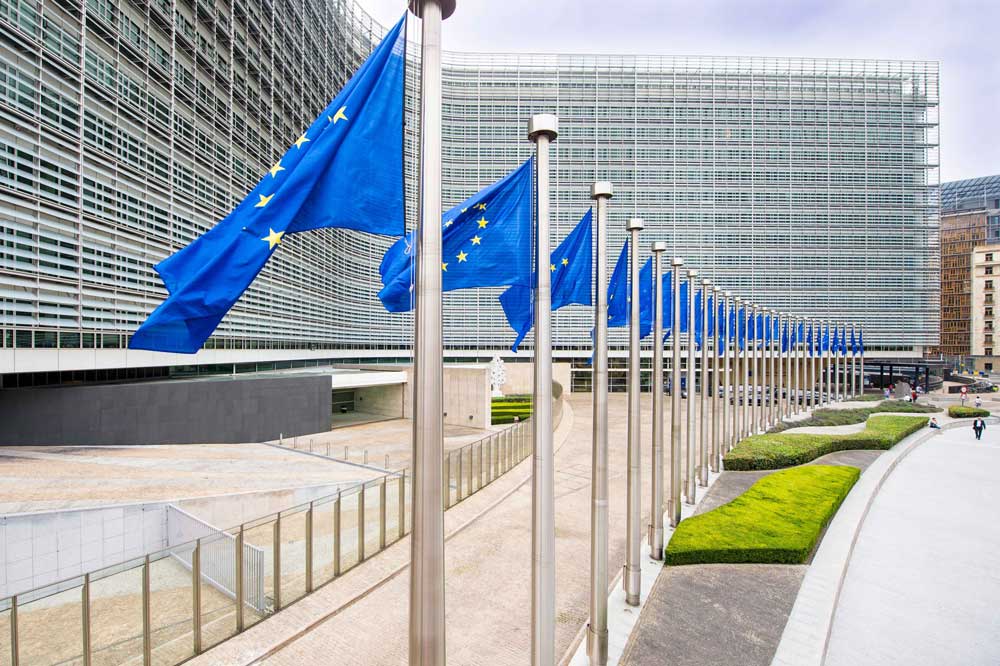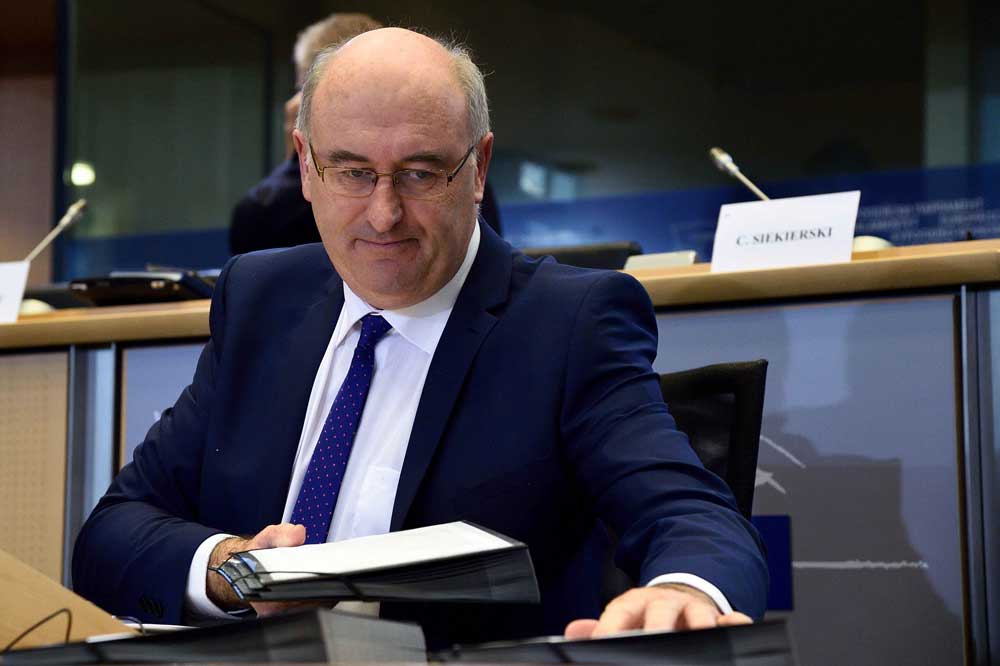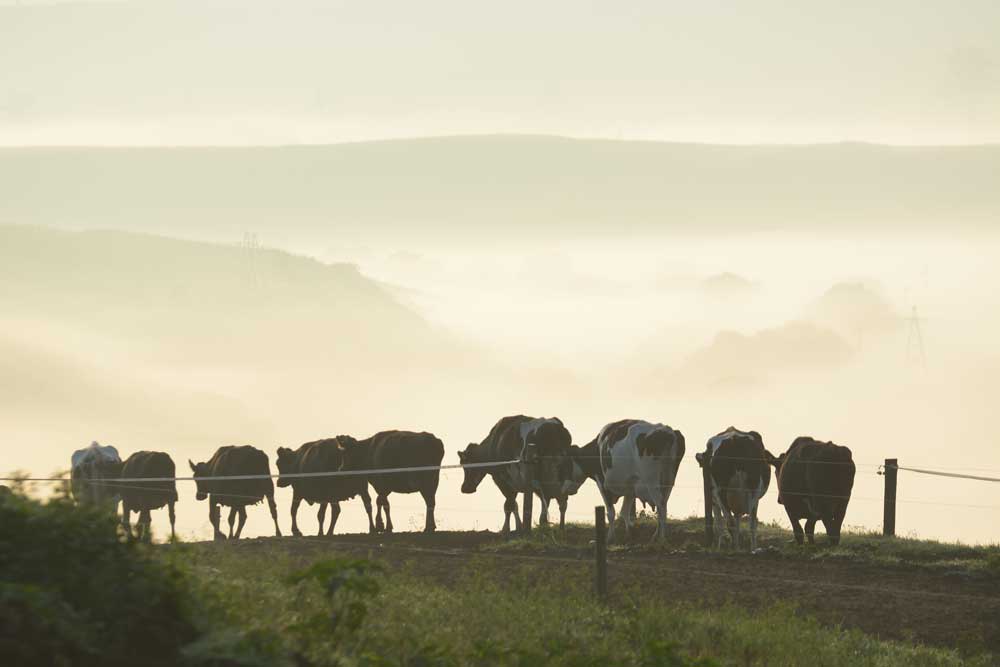Brussel’s new plans
By Thomas Preusse
In two years the present agricultural policy, in force since 2014, ends. EU Commission ideas on a new policy started making the rounds as early as November 2017, initially as »communications« and since July 1, 2018 as official recommendations. But contrary to previous reform proposals. there’s no impression that high waves are being caused, at least outside small agripolitical circles. Doubtless, many farmers – right across Europe – have other worries anyway.
And the relevant discussions, too, are also completely different. There are two important reasons for this:
- Firstly: There’s still no agriculture budget for the years after 2020 and may be not until autumn 2019. All we have is plenty to talk about, but no concrete figures. In the past, it was always the budget that was decided first. Only then was the form that the agricultural policy would take discussed, at first within the circle of EU agriculture ministers, then with parliament. While it’s true that both groups have already commented on the current recommendations, so far reaction mainly concerns requests for clarification.
- Secondly: Never before have commission recommendations been so vague. Agricultural Commissioner Phil Hogan skilfully formulates and packages these in neutral and sometimes quite ambiguous terms, leaving the softest target areas as small as possible and widest escape routes for steering out of any dangerous waters. His money’s definitely on consensus, and not polarisation. One used to have the impression that this commissioner’s only aim was to perpetuate the status quo. What a mistake! His recommendations mean a quiet revolution. They exist in form. But any content is missing. Initially, only the framework of the agricultural policy seems to be altered by the dreadfully ponderous terms, or concepts such as »new delivery model«, »enhanced conditionality« or »eco-schemes«. But green pictures could fit very well in this framework, if the will was there.
Drivers for future reform
Hogan‘s strategy could be explained through two »drivers«. First of all, the great »story« is missing this time, the one that could map out the road ahead. 25 years ago, agricultural overproduction along with liberal world trade rules led to renunciation of product-based subsidies and on to area payments. Even today, this process has not quite ended. Quite the opposite, in fact, with coupled payments still existing in almost all EU countries. Up to 15 % of the total support payments can be reserved for this and, as far as Brussels is concerned, this should not change.
In 2013 an attempt to combat criticism of condition-free payments led to the introduction of greening. Right from the start, this was doomed to failure because agricultural ministers and the EU parliament lost early on many of the »teeth« that could have made greening into an effective instrument of environmental policy. This was all right with the farmers, although their position in society was not at all improved thereby. The current reform recommendations, while formally oriented on the three dimensions of sustainability (economy, ecology and social engagement) developed from those nine overreaching targets. The fundamental problem of the agricultural policy (those that have a lot, get a lot) hasn’t, however, been solved by the new proposals. The two-pillar structure remains, after all.
Second driver is the Brexit trauma
In the agricultural policy there also tugs the centrifugal forces of real, or maybe only rhetorically planned, European disintegration. Hovering above everything, but especially atop Brussels, is the Brexit trauma. Whatever you do, don’t keep feeding the fires of »separatism«! Without a doubt, this fear plays an important role behind Hogan’s idea of giving EU countries more decision freedom (»subsidiarity«). Probably just as important, however, is the recognition that interests drifting apart from one another can no longer be kept together by Brussels. Officially, the commission continues to persist in a united European agricultural model.
It is not easy to find your bearings in the resultant fog. Even specialists shrug their shoulders because often, they don’t understand what the commission really means, and what it actually wants. Perhaps, however, there are a few »safety barriers« in the form of continuously heard terms to help keep us from leaving the road entirely.
1. New delivery model: Everyone does what they like?
If anything is at all »revolutionary« in Hogan‘s proposals, then it is this. Contrary to what we’ve heard until now, the commissioner no longer wishes to give detailed requirements. These tended to deliver less rather than more good results anyway - as well as being bound-up with much central bureaucracy and pedantic monitoring. Regulations and »compliance« (i.e. the obeying of such rules and their verification) should, instead, be replaced with individual EU countries getting more freedom to implement objectives predetermined together with Brussels. In other words, the commission would, for instance, define the overriding climatic and environmental objectives. Then, each country decide for itself how the objective might be best achieved under their prevailing conditions. »Strategic plans«, would be formulated and then reviewed and approved in Brussels. Each year, EU countries would then report their respective progress in meeting objectives. Benchmarks here are previously defined result indicators which, according to Brussels thinking, would apply EU-wide. If these are fulfilled, then a small reward could be forthcoming in the form of up to 5% more cash for the respective agricultural budget. Conversely, the commission wants to be able to reduce such payments, if targets are not reached. On their part, EU countries must be able to verify that they have an advisory service in place and capable of covering all the strategic plans involved.
These strategic plans mean a massive challenge for EU countries
Unsurprisingly, the commission tends to reap scepticism when it mentions the key term »bureaucracy reduction«. What would this involve in concrete terms? An analysis of the strengths and weaknesses of individual agricultural sectors, consultation with interest groups, the plan itself, its preliminary reviewing by the commission, the required revision and then final presentation. There’s also a psychological dimension that is not without importance: state authorities that, so far, have had the main task of processing regulations from Brussels, always with the dread of faulty allocation or insufficient use of available funds, should from now on actively formulate agricultural policies. Interest groups that, so far, have happily refused to cooperate would now have to work constructively with government.
EU countries are expected to have forwarded their strategic plans by January 1, 2020.
In many cases, it’s doubtful whether this ambitious date can be met. As said, formulation of the strategic plans promises to be quite complicated, not to mention their implementation. In the meantime, a new Euro parliament must be elected in May. And the EU Commission term of office concludes in October 2019. What if a new agricultural commissioner then announces new propositions? Among others, France and Poland have already indicated that January 1, 2021 is too early for initiating such a change in the system. They urge a transitional period, at least through 2021, during which the old rules should still apply. There’s also widespread fear that the work involved in such strategic plans is just too much for some EU countries – even although no one has really said so directly.
2. Enhanced conditionality: Bye, bye greening?
All direct payments, in addition to the second pillar’s hectare-based and livestock payments, should be still more strongly bound to compliance with environmental and climate regulations. The new system replaces cross-compliance and greening. It takes over quite a number of regulations and sets out a few new features. Thus, organic farmers and small farms won’t automatically be freed from the regulations, as they were previously. The talk is no longer of »diversification«, but instead of »crop rotation«, behind which lies the change from farm basis to field level. A sustainability instrument for nutrients is to be available at farm level, although this is now coming under fire because the concept doesn’t really fit into the framework.
EU countries should decide for themselves their proportion of land for ecological schemes. No longer can this be production land, this means weighting factors no longer apply. The use of plant protection materials on such areas is not banned right from the start. This should help acceptance while also doing something towards avoiding establishment of long lasting weed infestation. Whether there will be a lightening or an intensification of environment protection regulations depends, therefore, more than ever on respective national arrangements. Brussels promises to keep a stern watch over its »flocks«, to protect them from competition-distorting effects, or from joining-in a »race towards the lowest standards«.
3. Eco-schemes: Financial incentives possible
The so-called »eco-schemes« should give farmers the chance of volunteering more input for environment and climate. This, though, immediately poses the question: isn’t this the job of the second pillar? In principle, yes. But on the one hand, second pillar payments should be co-financed as a rule. This limits their possibilities in poorer (federal) states. On the other, and this is very important, such payments are only possible, according to WTO rules so far, as compensation for any extra costs and lower incomes involved. With the new organic farming regulations there should be, on the contrary, financial incentives encouraging farmers’ input into the environment, climate or similar. What actually is meant here in concrete terms, and how organic regulations are to differentiate in content from the second pillar, has been generally left open so far by the commission. A few examples have been named such as winter cover crops, integrated plant protection or reducing antibiotic use. Animal welfare husbandry processes can apparently not be supported. Although under the keyword »climate« could there be the possibility of support with exhaust air cleaning or slurry handling techniques?
As far as content and administration are concerned, a madly complicated procedure looms on the horizon. The great challenge will be giving teeth to the second pillar and organic regulations so that there’s a maximum benefit for environment and climate with a minimum of bureaucracy for farmers and (federal) states.
According to commission expectations – and against earlier considerations – every EU country should be duty-bound to offer »eco-schemes«. Nothing has been mentioned regarding a minimum or maximum land area. The extent of such regulations is also dependent upon the height the bar is set in the fundamental requirements (conditionality). The money involved is to be deducted from direct payments. Here, however, there may be the opportunity of better justifying payments and giving higher rewards for input.
Summary
Reading through the EU commission recommendations for 2021 to 2027 introduces old acquaintances such as capping and degression or insurance for risk management.
Above all, there are three new points:
- Firstly, greater flexibility for EU countries in implementation of targets specified by the EU (»new delivery model«).
- Secondly, even stronger binding of payments to certain requirements (»enhanced conditionality«).
- And thirdly, a new category of environmental measures in the first pillar (»eco-schemes«). Because of the Brexit-caused delay of the medium-term financial framework for 2021 to 2027, EU parliamentary elections and the great challenges involved in the implementation, it is now widely accepted as unlikely that the new system will be up and ready by January 1, 2021.







